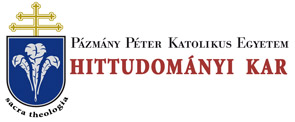Folia Theologica et Canonica 10. 32/24 (2021)
Ius canonicum
132 ALBERTO SORIA JIMENEZ, OSB “that certain groups of the faithful may on special occasions be allowed to participate in the Mass celebrated according to the Rites and texts of the former Roman Missal (...) This faculty may be granted provided that groups make the request for reasons of genuine devotion, and provided that the permission does not disturb or damage the general communion of the faithful”. However, this was only possible “by consent of their Ordinary and in accordance with the norms given by the same”, because in the said rescript there was a great concern “that the use of the Order of Mass given in the former Missal should not become a sign or cause of disunity in the Catholic community” (His Holiness, paragraph l).22 In SP, the 1962 Roman Missal is seen, with better judgement, as “a gift destined to build the body of Christ”, and as an extremely valuable instrument for the long-desired inter-church reconciliation. And despite the difficulties caused in certain environments due to its promulgation, the formula on the unity of the Roman Rite has already produced ecumenical fruits, for at least one sui iuris monastery and a clerical religious institute of diocesan law have been received into full communion with the Catholic Church.23 Benedict XVI’s aim for inter-church reconciliation has motivated all his acts of government, as the motu proprio Ecclesice unitatem suggests from its title.24 The Priestly Fraternity of Saint Pius X has not yet brought its canonical situation into line, but the expansive and integrative strength of SP has begun to bear fruits of reconciliation, and for that reason, SP should be accepted in a spirit of ecclesial communion. From the theological perspective, it is not a “fundamentalist” motu proprio, as some have criticised with too much superficiality, but an integrative and just norm to reconstruct and strengthen unity. Certainly, the promulgation of SP has not been a tactical nor strategic decision to heal divisions, but a necessary decision required due to the nature 22 Cf. SC. pro Sacramentis et Cultu Divino, Rescr. His Holiness (5 nov. 1971): O’Connor, J. I., Canon Law Digest X. Officially Published Documents Affecting the Code of Canon Law 1982- 1983, Mundelein, 111. 2006. 147-148. 231 refer to the Monastery of Christ the King in Birmingham (Alabama), established in 1984 and reconciled with Rome on May Is*2011; cf. "Independent" monastery reconciled to the Church in the website www.lmschairman.org/2011/06/sede-vacantist-monastery-reconciled-to.html . And also to the Children of the Most Holy Redeemer, established as a clerical religious institute of diocesan law on 15th August 2012; cf. Mary, M. - Mary, A., Erklärung über unsere Beziehungen zu Rom - Konvent der Redemptoristen der Orkney Insel in Una Voce-Korrespondenz 38 (2008) 195-200, and Kanonische Anerkennung der Transalpinen Redemptoristen, in Una Voce-Korrespondenz 42 (2012) 335. 24 Cf. Benedictus XVI, MR Ecclesice unitatem (2 iul. 2009): AAS 101 (2009) 710-711. See its Spanish translation in El Papa Benedicto XVI reforma la estructura de la Comisión pontificia “Ecclesia Dei", en L ’Osservatore Romano. Edición en lengua espahola (July 17,h 2009) 3; and also in the commentary by Púig Sanahuja, R, Lettera Apostolica motu proprio “Ecclesiae unitatem”, a proposito della Commissione Ecclesia Dei, 2 Iuglio 2009. Mutamenti strutturali della Commissione Ecclesia Dei, in Ius Ecclesice 21 (2009) 701-703.
